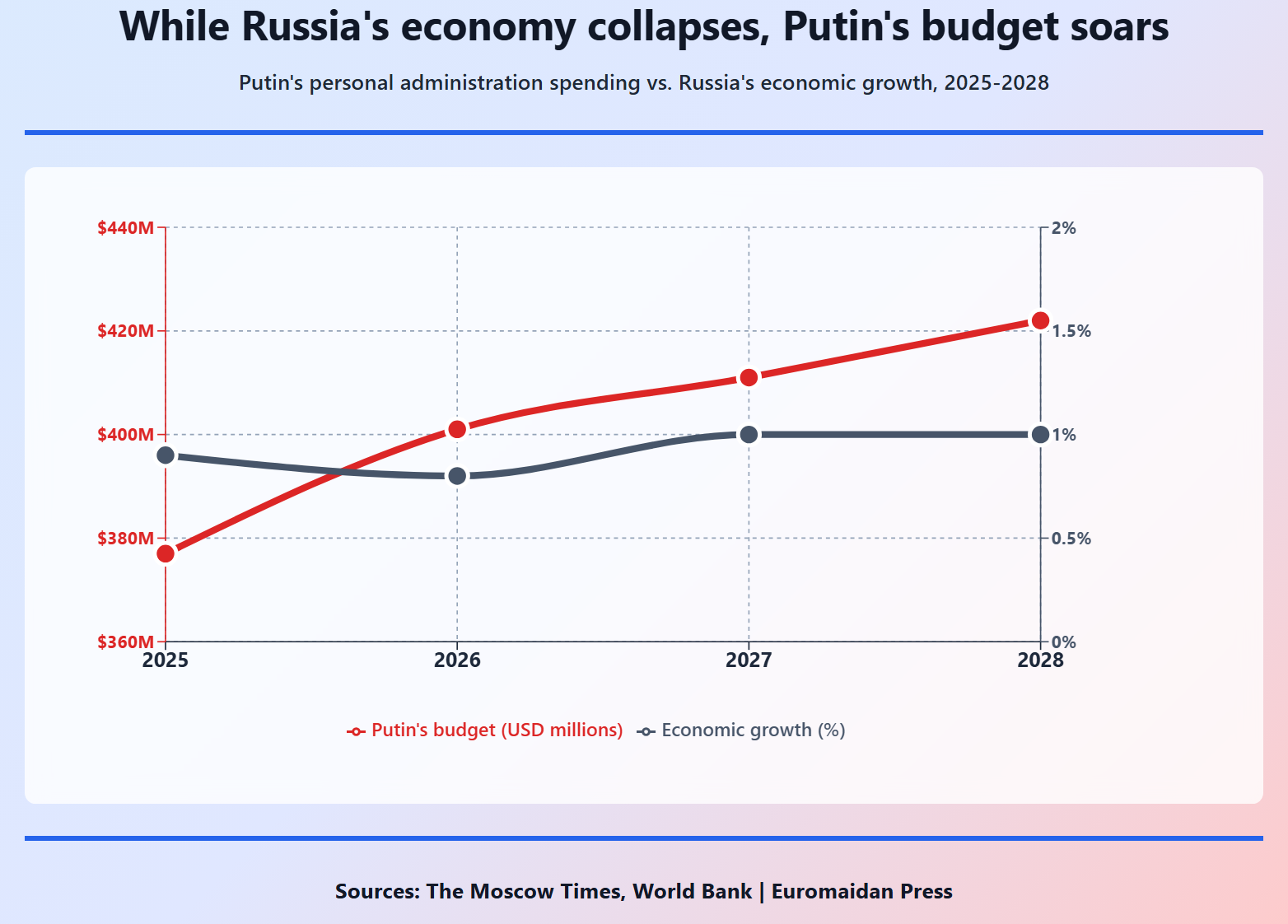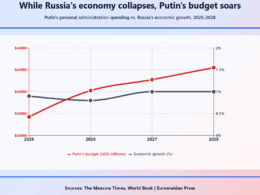Russia’s central bank has begun selling gold from its reserves on the domestic market for the first time, marking a policy reversal as Moscow scrambles to cover a budget deficit that has ballooned to 20 times last year's level, Ukraine’s Foreign Intelligence Service (SZRU) reported on 27 November.
The shift adds another strain to Russia’s already-stretched war finances.
Moscow’s federal deficit hit 4.2 trillion rubles ($48 billion) in the first ten months of 2025—a figure that was just 0.2 trillion rubles during the same period last year, according to Russia’s Finance Ministry data. Oil and gas revenues collapsed 27% year-on-year in October, while the National Wealth Fund has shrunk from $113.5 billion in 2022 to $51.6 billion.
Scale of the sell-off
Until 2025, Russia’s central bank was buying gold, not selling it. The Finance Ministry would transfer gold to the central bank, building up reserves as a buffer against sanctions and currency shocks. The bullion never left state hands.
Now the regulator is doing the opposite—conducting real sales to domestic banks, state companies, and investment funds, The Moscow Times reported, citing the central bank’s confirmation to Interfax.
The scale is substantial. SZRU estimates gold sales could reach $30 billion (approximately 230 tons) in 2025 and at least $15 billion (115 tons) in 2026. Gold holdings within the National Wealth Fund have already dropped 57%—from 405.7 tons to 173.1 tons since February 2022, according to Ukrainian intelligence.
Shrinking room for maneuver
The gold sales allow Moscow to inject liquidity into the budget and prop up the ruble’s exchange rate. But they come with costs that compound over time.
“Such large-scale monetization of reserves accelerates the depletion of stockpiles that are already under pressure from sanctions and declining available currency instruments,” SZRU stated.
Russia’s financial toolkit has been narrowing for months. The government has raised VAT to 22%—the second tax hike this year—while regional budgets have been slashed by 4 trillion rubles ($49 billion). More than half of Russia’s regions ran budget deficits in the first nine months of 2025, The Moscow Times reported on 25 November.
Defense spending continues to consume an outsized share of resources. Military and security outlays now account for 40% of Russia’s federal budget.
Not collapse, but constraint
Trending Now
For Western policymakers tracking sanctions effectiveness, the gold sales offer a concrete metric: reserves built over decades are now being liquidated to sustain current operations.
Russia still holds over 2,300 tons of gold—the world's fifth-largest reserves, worth approximately $200 billion at current prices. Moscow has shown adaptability, rerouting oil exports through shadow fleets and third countries to evade sanctions.
But each month, the fiscal space narrows.
Oil revenues are down. Tax hikes squeeze businesses and consumers. Regional governments compete for shrinking funds. And now, gold that was accumulated for decades as a strategic buffer is being sold off to meet immediate needs.
Ukrainian intelligence described the fundamental trade-off: the gold sales strategy “deepens the deficit of liquid reserves, makes state finances more dependent on asset sales, and limits opportunities for future interventions.”
The pattern resembles what economist Volodymyr Vlasiuk described as Russia’s narrowing options: “The question is how they will cover the budget deficit at the end of this year.”
Gold—long considered Russia’s untouchable reserve—is now part of the answer.






